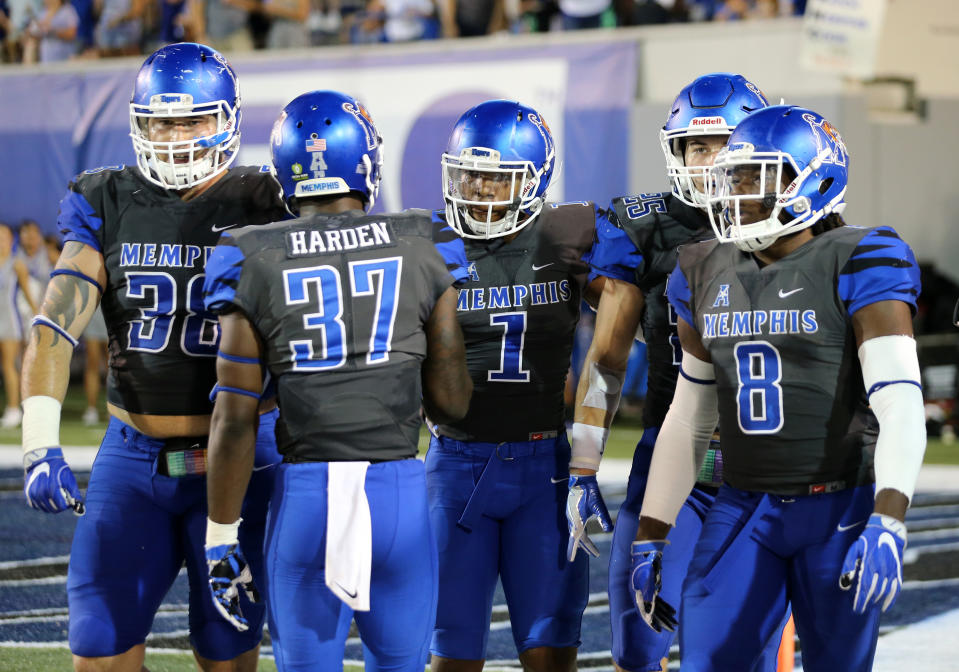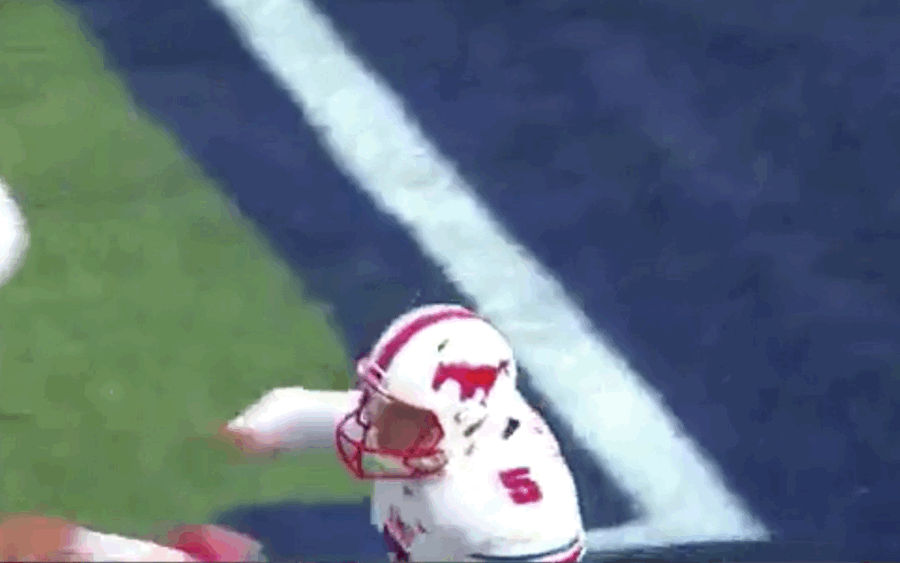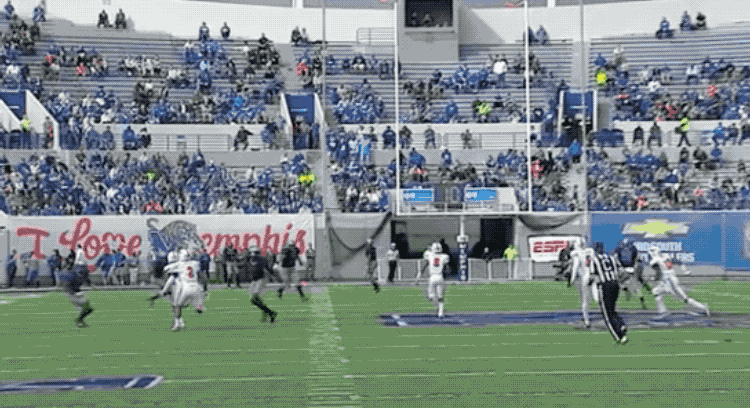Update: AAC clarifies targeting penalty on Memphis DB Caelon Harden

Update: Nov. 20 – 2:30 p.m
The AAC has clarified that Memphis’ Caelon Harden was called for targeting on an earlier hit during the same play as the block on SMU’s Josh Williams.
The television broadcast originally identified the Williams hit, shown below, as the reasoning for the penalty.

However, Harden had previously launched himself at a separate SMU player which resulted in the foul and the ejection.
“There is an angle from a low end zone shot that clearly shows that the player in question made high contact with another player before the action that is shown in the clip.” an AAC spokesman said in an email to Yahoo Sports. “The television crew did not show this angle on the air during the stoppage but showed it at the beginning of the third quarter to correct the record.”
That other player appears to be SMU linebacker Noah Spears. From a zoomed out view of the play, it looks like the correct call was made on Harden.

Original story: Nov. 18 – 2:27 p.m.
At this point the college football world can agree on at least two things:
The targeting rule is well-intentioned
Targeting is often inexplicably called by officials
This is a story about the latter of those items.
We’ve seen a lot of bad targeting calls in 2017, but the ejection of Memphis defensive back Caelon Harden is easily the most egregious of the year. Harden was on his team’s kick return unit when he had a chance to lay a block on SMU kicker Josh Williams. Harden came in and gave Williams a strong two-handed shove. The refs saw it as targeting.
Judge it for yourself.

Memphis has every reason to get upset with this call. Even by the strictest interpretation of the targeting rule, this play doesn’t hold up. For starters, Williams isn’t what you could reasonably call defenseless here.
So let’s look at the other criteria. Harden certainly didn’t launch himself or make forcible contact to Williams’ head or neck area. He didn’t crouch before thrusting upward. There was no leading with the helmet, shoulder, forearm, fist, hand or elbow to make contact with Williams head or neck. And Harden didn’t lead with the crown of his helmet into the hit.
Those aren’t the only ways to earn a targeting call, but they are explicitly written into the rule as prime examples of a punishable incident.
There is nothing wrong with college football adding an emphasis on keeping players safe and ejecting those who cross the line. But it’s clear officials are having a tough time determining where that line is. Especially when targeting penalties are now reviewed by replay officials.
A penalty like the one on Harden does nothing to make the game safer. It’s just plain unfair to everyone on the field.
– – – – – –
Blake Schuster is a writer for Dr. Saturday on Yahoo Sports. Have a tip? Email him at blakeschuster@yahoo.com or follow him on Twitter! Follow @Schustee
More college football coverage from Yahoo Sports:
• Baker Mayfield grabs crotch, shouts expletives at Kansas sideline after TD
• Oklahoma State’s Big 12 title hopes gone in loss to Kansas State
• Clemson WR makes absurd catches in blowout win
• Arkansas’ fourth-down call backfires in loss


